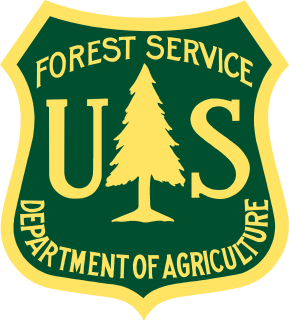
The United States Forest Service (USFS) is an agency of the U.S. Department of Agriculture that administers the nation's 154 national forests and 20 national grasslands. The Forest Service manages 193 million acres (780,000 km2) of land. Major divisions of the agency include the Chief's Office, National Forest System, State and Private Forestry, Business Operations, and Research and Development. The agency manages about 25% of federal lands and is the only major national land management agency not part of the U.S. Department of the Interior, which manages the National Park Service, the U.S. Fish and Wildlife Service, and the Bureau of Land Management.

The Morrill Land-Grant Acts are United States statutes that allowed for the creation of land-grant colleges in U.S. states using the proceeds from sales of federally-owned land, often obtained from indigenous tribes through treaty, cession, or seizure. The Morrill Act of 1862 was enacted during the American Civil War, and the Morrill Act of 1890 (the Agricultural College Act of 1890 expanded this model.

The Pure Food and Drug Act of 1906 was the first of a series of significant consumer protection laws which was enacted by Congress in the 20th century and led to the creation of the Food and Drug Administration. Its main purpose was to ban foreign and interstate traffic in adulterated or mislabeled food and drug products, and it directed the U.S. Bureau of Chemistry to inspect products and refer offenders to prosecutors. It required that active ingredients be placed on the label of a drug's packaging and that drugs could not fall below purity levels established by the United States Pharmacopeia or the National Formulary.
Special districts are independent, special-purpose governmental units that exist separately from local governments such as county, municipal, and township governments, with substantial administrative and fiscal independence. They are formed to perform a single function or a set of related functions. The term special district governments as defined by the U.S. Census Bureau excludes school districts. In 2017, the U.S. had more than 51,296 special district governments.
The United States Government Publishing Office is an agency of the legislative branch of the United States Federal government. The office produces and distributes information products and services for all three branches of the Federal Government, including U.S. passports for the Department of State as well as the official publications of the Supreme Court, the Congress, the Executive Office of the President, executive departments, and independent agencies.

A land-grant university is an institution of higher education in the United States designated by a state to receive the benefits of the Morrill Acts of 1862 and 1890.
The Enabling Act of 1802 was passed on April 30, 1802 by the Seventh Congress of the United States. This act authorized the residents of the eastern portion of the Northwest Territory to form the state of Ohio and join the U.S. on an equal footing with the other states. To accomplish this, and in doing so, the act also established the precedent and procedures for creation of future states in the western territories. The Enabling Act of 1802 would be the first appropriation by Congress for internal improvements in the country's interior.
The Public Printer of the United States was the head of the United States Government Publishing Office (GPO). Pursuant to 44 U.S.C. § 301, this officer was nominated by the President of the United States and approved by the United States Senate. In December 2014, Congress passed and President Obama signed into law H.R. 83, which consolidated and continued appropriations for FY 2015. Section 1301 of that act changed the name of the Government Printing Office to the Government Publishing Office and the title of Public Printer to Director. Thus, Davita Vance-Cooks was the last Public Printer of the United States and the first Director of the U.S. Government Publishing Office.
The Square Deal was Theodore Roosevelt's domestic program, which reflected his three major goals: conservation of natural resources, control of corporations, and consumer protection.

The "College Township" was the full survey township located in the northwest corner of Butler County, Ohio, now corresponding to the civil township of Oxford, designated by the Ohio General Assembly to be the site of the state university now called Miami University. When Congress, on May 5, 1792, authorized the sale to John Cleves Symmes of the land known as the Symmes Purchase, one of the terms was that he would allocate a full township of land to support a university, a promise he never fulfilled. The United States Congress subsequently allowed the State of Ohio to pick a township in the public domain for a college. They chose a township in the first range in the Congress Lands, namely R1E T5.

The New Freedom was Woodrow Wilson's campaign platform in the 1912 presidential election, and also refers to the progressive programs enacted by Wilson during his first term as president from 1913 to 1916 while the Democrats controlled Congress. First expressed in his campaign speeches and promises, Wilson later wrote a 1913 book of the same name. In terms of legislation, wartime policies are generally not considered part of the New Freedom. After the 1918 midterm elections, Republicans took control of Congress and were mostly hostile to the New Freedom. As president, Wilson focused on three types of reform:
- Tariff reform: This came through the passage of the Underwood Tariff Act of 1913, which lowered tariffs for the first time since 1857 and went against the protectionist lobby.
- Business reform: This was established through the passage of the Federal Trade Commission Act of 1914, which established the Federal Trade Commission to investigate and halt unfair and illegal business practices by issuing "cease and desist" orders, and the Clayton Antitrust Act.
- Banking reform: This came in 1913 through the creation of the Federal Reserve System and in 1916 through the passage of the Federal Farm Loan Act, which set up Farm Loan Banks to support farmers.

The 67th United States Congress was a meeting of the legislative branch of the United States federal government, consisting of the United States Senate and the United States House of Representatives. It met in Washington, D.C. from March 4, 1921, to March 4, 1923, during the first two years of Warren Harding's presidency. The apportionment of seats in the House of Representatives was based on the Thirteenth Census of the United States in 1910.
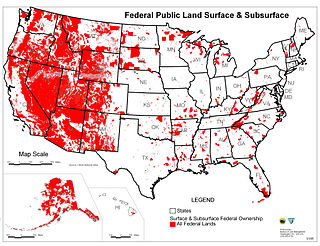
Federal lands are lands in the United States owned by the federal government. Pursuant to the Property Clause of the United States Constitution, the Congress has the power to retain, buy, sell, and regulate federal lands, such as by limiting cattle grazing on them. These powers have been recognized in a long line of U.S. Supreme Court decisions.

The 39th United States Congress was a meeting of the legislative branch of the United States federal government, consisting of the United States Senate and the United States House of Representatives. It met in Washington, D.C. from March 4, 1865, to March 4, 1867, during Abraham Lincoln's final month as president, and the first two years of the administration of his successor, U.S. President Andrew Johnson.
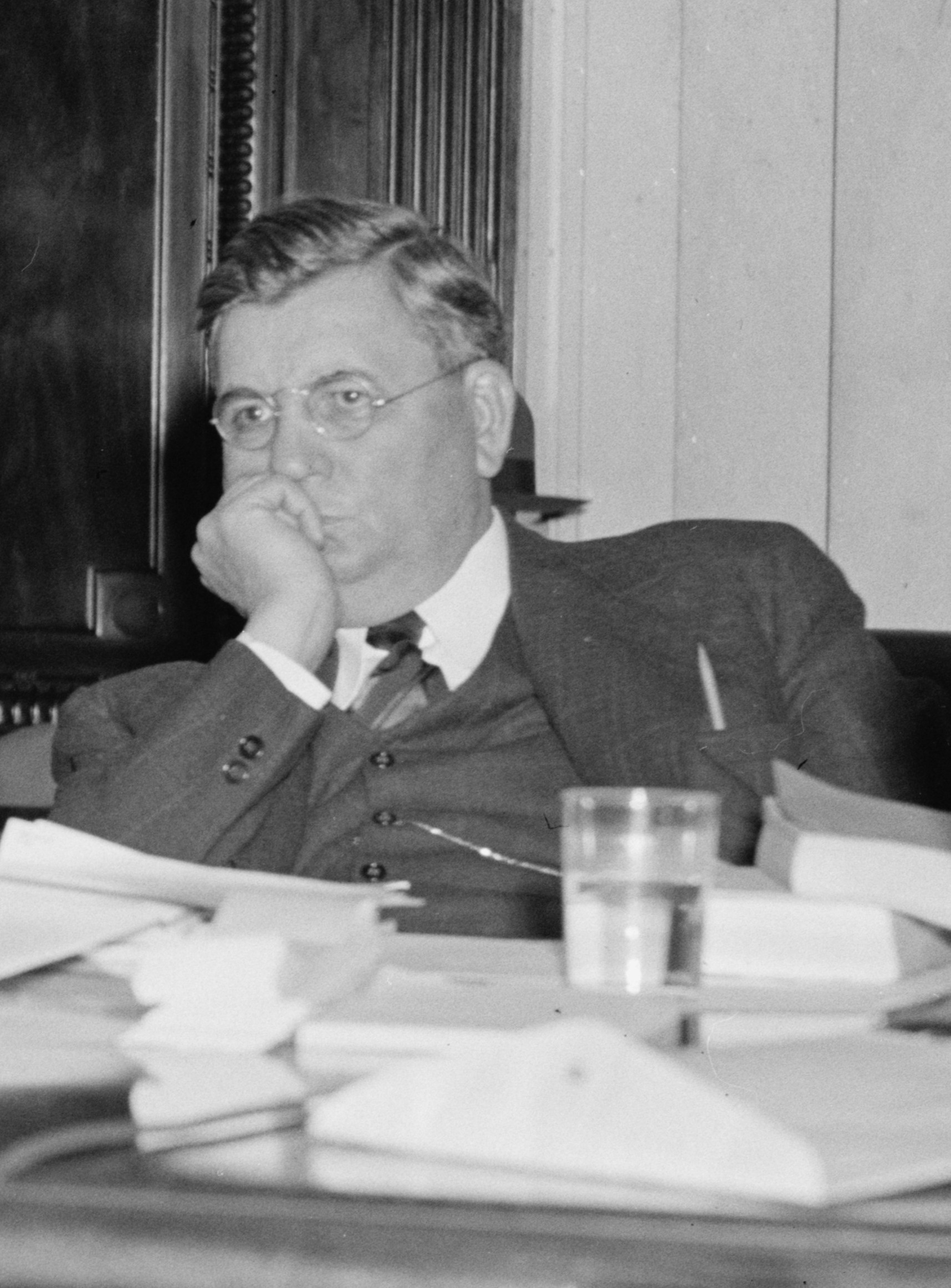
Thomas Albert Jenkins was a member of the Ohio state senate and a long-serving U.S. Representative from Ohio's 10th District. He was born in Oak Hill, Jackson County, Ohio.
The Office of Education, at times known as the Department of Education and the Bureau of Education, was a small unit in the Federal Government of the United States within the U.S. Department of the Interior from 1867 to 1972. It is now separated into and succeeded by the United States Department of Education and the Department of Health and Human Services

Mark Eugene Amodei is an American lawyer and politician serving as the U.S. representative for Nevada's 2nd congressional district since 2011. He served in the Nevada Assembly from 1997 to 1999 and in the Nevada Senate, representing the Capital District, from 1999 to 2011. Amodei chaired the Nevada Republican Party from 2010 until 2011, when he stepped down in order to pursue the nomination for a special election for Congress; he was the Republican nominee in the election held on September 13, 2011, to replace Dean Heller, who had been appointed to the United States Senate. He became the dean of Nevada's congressional delegation once Heller lost his election for a second full term in 2019, although Dina Titus served one term in the House before he was first elected.
The Commission on Economy and Efficiency was a presidential commission appointed by President William Howard Taft between 1910 and 1913 to look at and propose reforms for the United States federal government, particularly the presidential budget. It is also known in government reorganization and reform scholarship as the Taft Commission, however, this is a bit of a misnomer as the Taft Commission originally referred to the Philippine Commission of which Taft was the chairman. The Commission on Economy and Efficiency is most notable for proposing the first budget for the federal government but also is notable for creating the procedure for the President to establish a commission to study administrative reform.
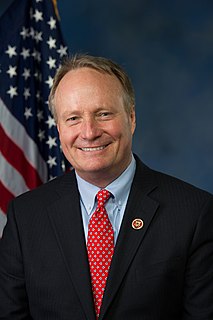
David Patrick Joyce is an American politician and former prosecutor who has served as the United States representative for Ohio's 14th congressional district since 2013. An attorney, Joyce was previously the prosecutor of Geauga County, Ohio. He is a member of the Republican Party.
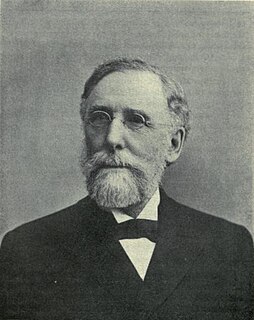
Emerson Elbridge White was an American educator and the third president of Purdue University.












